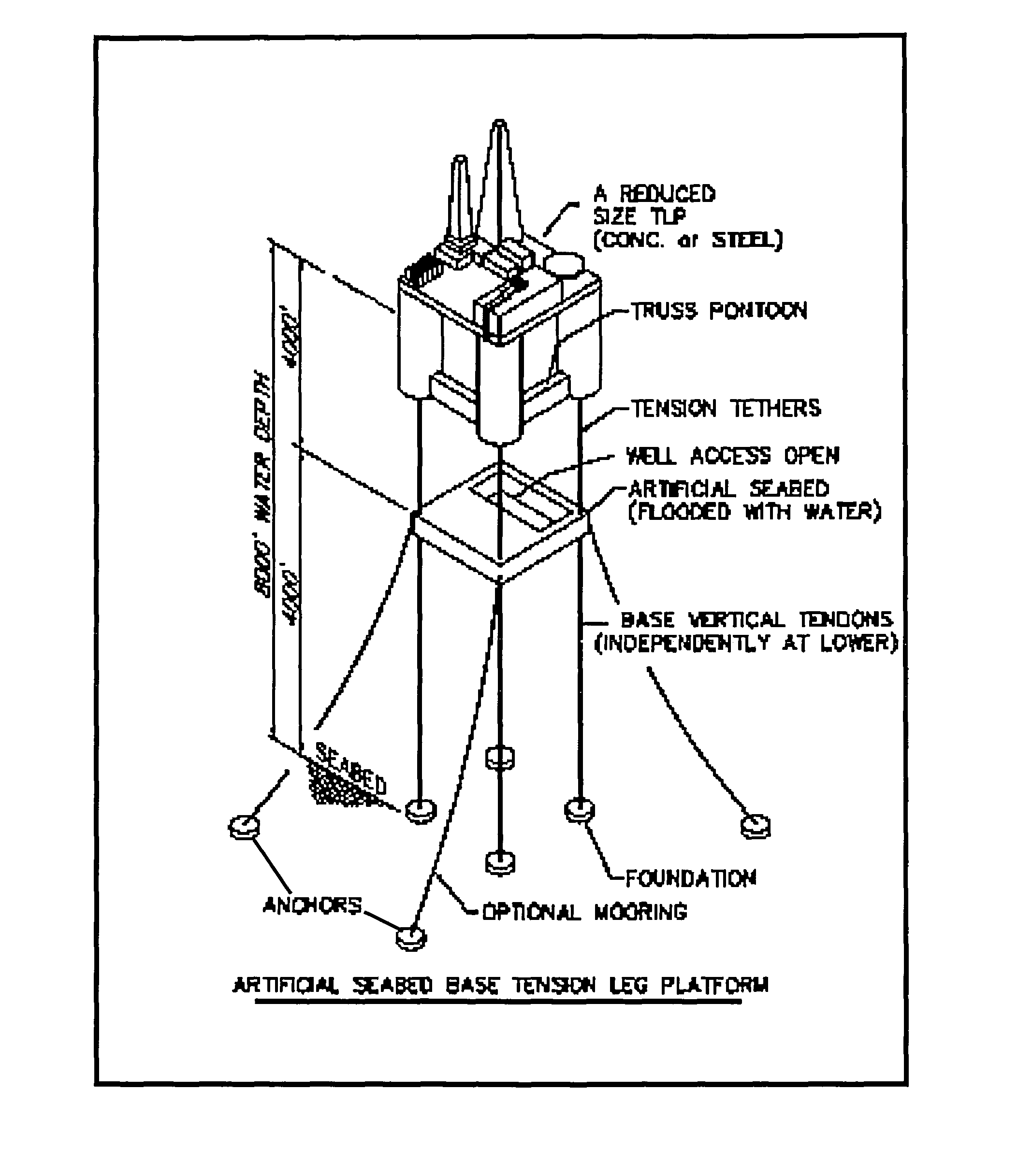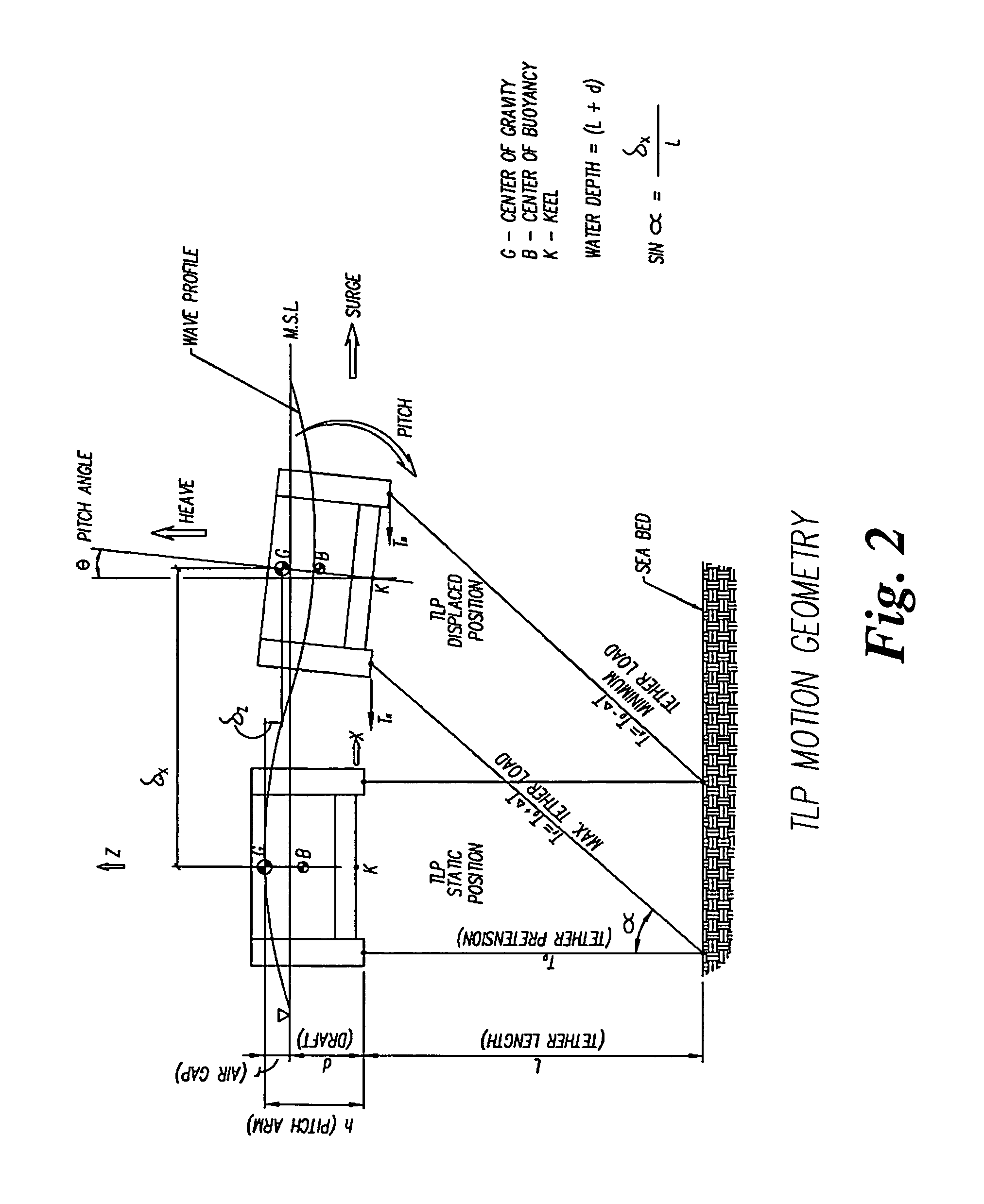Tension-based tension leg platform
a technology of tension leg and platform, which is applied in the direction of anchoring arrangement, vessel construction, construction, etc., can solve the problems of tlp tendon requirement to keep the vessel concept effective within the practical cost budget, dynamic system is susceptible to direct wave energy at resonance, and limited water depth limitation of tlp technology less than 5000
- Summary
- Abstract
- Description
- Claims
- Application Information
AI Technical Summary
Benefits of technology
Problems solved by technology
Method used
Image
Examples
Embodiment Construction
Truss-Pontoon to TLP:
[0025]Referring now to FIG. 3, in order to achieve the above three goals, first a modified truss pontoon type hull is used in the present tension-based tension leg platform, for example, a truss pontoon type hull as shown and described in my U.S. Pat. No. 6,761,124, titled “Column-Stabilized Floating Structures with Truss-pontoons”, which is hereby incorporated by reference in its entirety. A semi-submersible platform having lateral trusses, a rectangular deck mount structure or a three-sided deck mount structure at the top of the columns open on one side to allow on-site float-over deck installation, and outwardly extending tendon support frame at the lower end of the columns, is shown and described in my pending U.S. patent application Ser. No. 12 / 378,888, titled “Dry Tree Semi-Submersible Platform For Harsh Environment And Ultra Deepwater Applications”, which is hereby incorporated by reference in its entirety.
[0026]Removing the pontoon from the conventional ...
PUM
 Login to View More
Login to View More Abstract
Description
Claims
Application Information
 Login to View More
Login to View More - R&D
- Intellectual Property
- Life Sciences
- Materials
- Tech Scout
- Unparalleled Data Quality
- Higher Quality Content
- 60% Fewer Hallucinations
Browse by: Latest US Patents, China's latest patents, Technical Efficacy Thesaurus, Application Domain, Technology Topic, Popular Technical Reports.
© 2025 PatSnap. All rights reserved.Legal|Privacy policy|Modern Slavery Act Transparency Statement|Sitemap|About US| Contact US: help@patsnap.com



